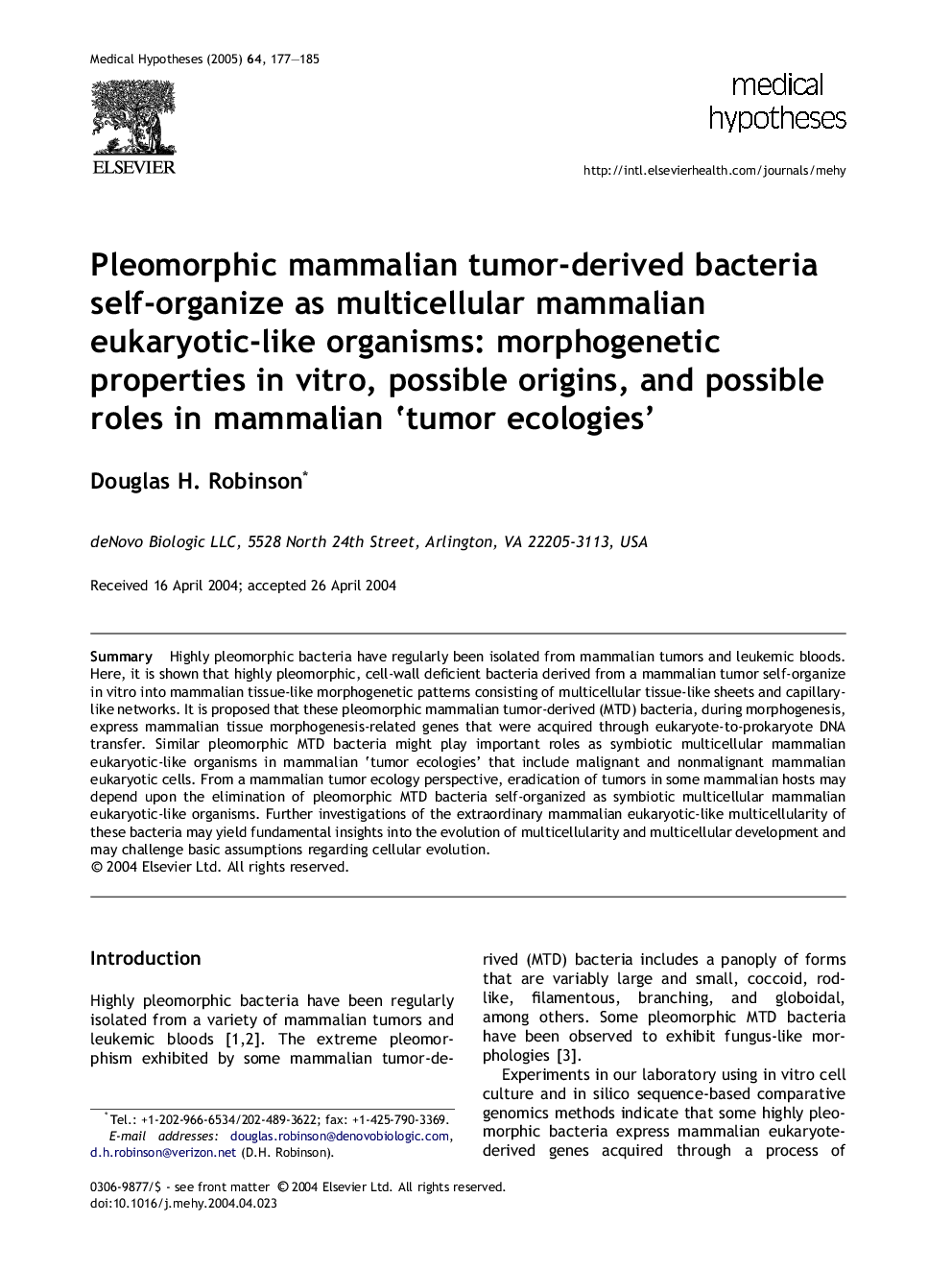| Article ID | Journal | Published Year | Pages | File Type |
|---|---|---|---|---|
| 8996932 | Medical Hypotheses | 2005 | 9 Pages |
Abstract
Highly pleomorphic bacteria have regularly been isolated from mammalian tumors and leukemic bloods. Here, it is shown that highly pleomorphic, cell-wall deficient bacteria derived from a mammalian tumor self-organize in vitro into mammalian tissue-like morphogenetic patterns consisting of multicellular tissue-like sheets and capillary-like networks. It is proposed that these pleomorphic mammalian tumor-derived (MTD) bacteria, during morphogenesis, express mammalian tissue morphogenesis-related genes that were acquired through eukaryote-to-prokaryote DNA transfer. Similar pleomorphic MTD bacteria might play important roles as symbiotic multicellular mammalian eukaryotic-like organisms in mammalian `tumor ecologies' that include malignant and nonmalignant mammalian eukaryotic cells. From a mammalian tumor ecology perspective, eradication of tumors in some mammalian hosts may depend upon the elimination of pleomorphic MTD bacteria self-organized as symbiotic multicellular mammalian eukaryotic-like organisms. Further investigations of the extraordinary mammalian eukaryotic-like multicellularity of these bacteria may yield fundamental insights into the evolution of multicellularity and multicellular development and may challenge basic assumptions regarding cellular evolution.
Related Topics
Life Sciences
Biochemistry, Genetics and Molecular Biology
Developmental Biology
Authors
Douglas H. Robinson,
